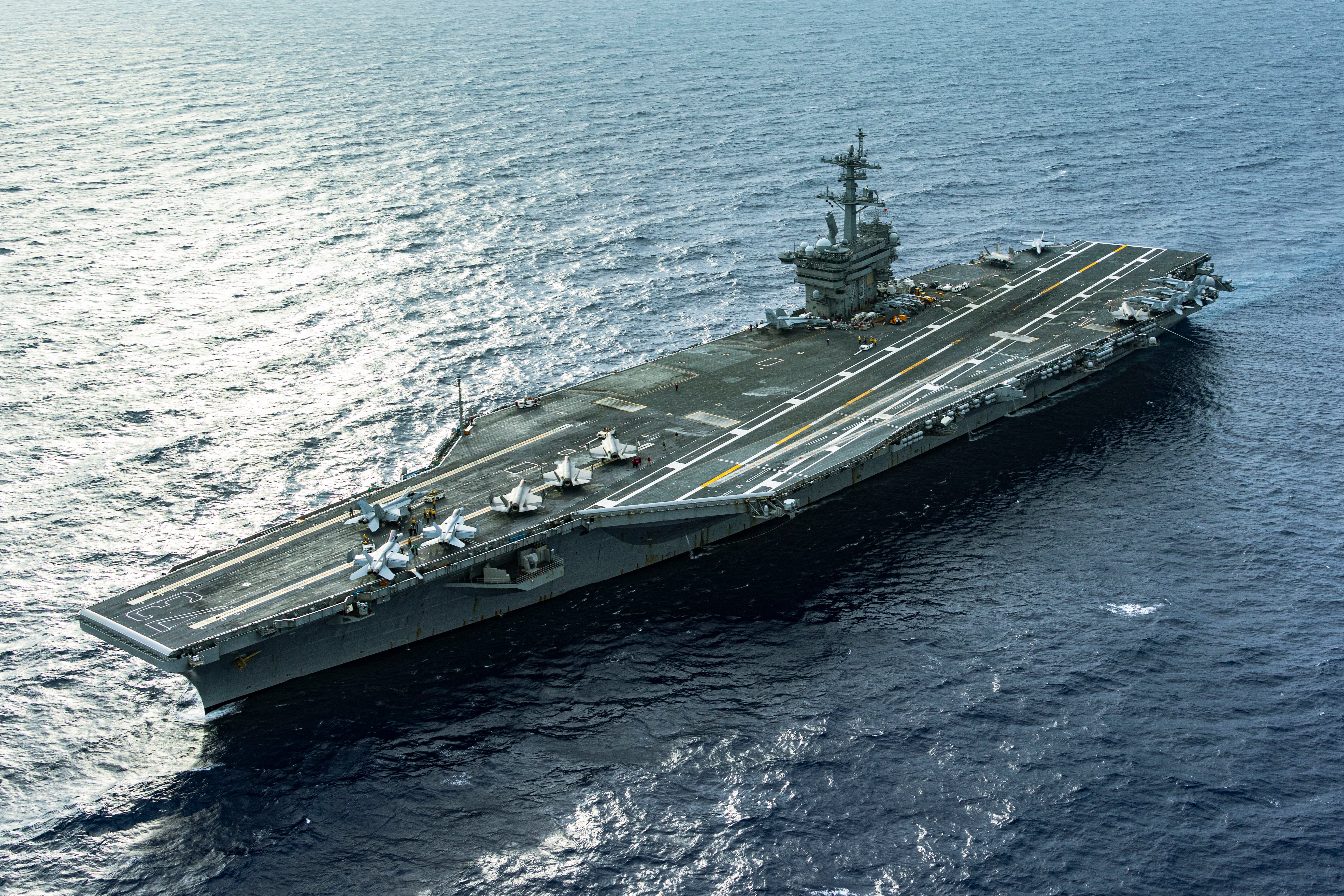Marine Corps Commandant Gen. Joseph Dunford worries about a "post-deployment death spiral" in which seasoned enlisted leaders return from a pump and rapidly depart their units for other opportunities in the fleet or elsewhere. With noncommissioned officer and staff NCO ranks thinning and leaving key leadership positions unfilled, Dunford is pushing forward a detailed plan to level that death spiral out.
Fewer than half of Marine Corps rifle squads now have an infantry sergeant to lead them, Dunford said Feb. 5 during an exclusive interview at his sparely decorated office in the Pentagon. Other sectors have less clearly documented shortfalls. It's a complex administrative and organizational problem that the commandant plans to fight with incentives for developing leaders, better tasking, and an overhaul of the administrative process that determines how and when Marines are ordered to new units.
"What we're trying to do right now is go out there across the institution, define the right leader-to-led ratio for each element of the [Marine air-ground task force] right down to the right unit, and review our inventory of staff NCOs by grade, [military occupational specialty] and qualification," Dunford said.

Gen. Joseph Dunford, Commandant of the Marine Corps, is interviewed in his office at the Pentagon on Thursday.
Photo Credit: Mike Morones/Staff
Dunford will lead that initiative as head That will be the work of an operational planning team assisted by Marine Corps Manpower and Reserve Affairs. and led by Dunford himself. The goal, he said, is to determine how many NCOs and staff NCOs each unit and sector needs to provide more junior Marines with continuity of leadership, expertise and professional maturity.
It's more than a retention question: The Marine Corps' community of infantry sergeants, for example, is staffed at 105 percent, Dunford said. Nonetheless, infantry squads that are not deployed or in the queue to deploy are still getting short shrift.
"If the requirement is 100 sergeants and 25 of them are outside the operating forces and 75 are inside the operating forces, but then X number are going to be in school at any given time and X number are going to be outside the Marine Corps at any given time, what's the right number in inventory to make sure you can actually provide those NCOs and staff NCOs across the board?" Dunford said.
Within the ranks, some Marines believe the aggregate of experience and expertise that Dunford refers to as maturity is already felt to be lacking. by some.
Gunnery Sgt. Geoffrey Barisano, an aviation ordnance chief with Marine Aviation Logistics Squadron 70, said he felt the loss of seasoned senior enlisted leaders during a 2014 deployment to Afghanistan.
"We have a lot of knowledge base walking out the door," he said. "It's those intangibles … staff sergeants with 12, 14 years in the Marine Corps. You can't grow that overnight."
Without that institutional knowledge, Barisano said, it was difficult to help more junior Marines understand the operational mindset and to communicate the intangible of good judgment in a combat zone.
"Sometimes I had to sit down and explain it to them," he said. "'Guys, this isn't America. We've got to move faster; we've got to execute the mission.'"
Lt. Gen. David Berger, commander of I Marine Expeditionary Force, also referenced addressed the issue in an address to the Marine Corps Association and Foundation on Jan. 29.
"We cannot keep gapping units where we need a good strong NCO or staff NCO and he's not there," Berger said. "They've got to have the right technical, the right leadership qualifications for the billet. This is personnel, manpower stuff, and it's really, really hard. It's really hard to get right, but it's absolutely vital to our continuity, it's absolutely vital to cohesion. It's directly linked to readiness."
subhead: Developing squad leaders
To address the shortfalls in infantry squad leaders, Dunford is rolling out a squad leader development program that will encourage NCOs to remain in those positions by creating a dedicated MOS and career path that promises education and guaranteed assignments in exchange for a multiple-year commitment.
While full details of this program have yet to be released, a Marine official at headquarters Marine Corps said the possibility of attaching bonuses or other cash incentives to the program has been seriously discussed.
An early announcement from the Marine Corps indicated that the new program will accept just 100 applicants when it launches later this year, with eventual plans to expand to include all Marine squad leaders across the force.
"The [squad leader development program is] one of the first issues that comes out only because we've been working that for so long. And I certainly have touched this several times over the past several years," Dunford said. "It's about professionalizing our enlisted force for the 21st century, recognizing the increased tactical and technical challenges for our NCOs, and making sure … that our personnel assignment policy is supported."
Other plans will require more gradual change as Dunford's operational planning team completes the painstaking work of developing new data tables to ensure all elements of the Marine Corps are appropriately staffed with senior enlisted leaders.
In coming years, Dunford said, he hopes to develop a system that uses the number and proportion of NCOs and staff NCOs within a unit as an independent variable to gauge readiness across the fleet. Used the way gear and maintenance gauges on readiness are used today, this could provide Dunford and unit commanders with an additional tool to determine the status of the force.
Dunford said he also hopes to develop an algorithm that will make sure Marines maintain continuity of leadership at the smallest unit levels in order to stem that "post-deployment death spiral" he described.
"I want to make sure I have a system that allows me to know that the platoon sergeant and platoon commander aren't going to move at the same time when we come back from deployment," he said. "That sounds pretty simple, but it's really about data. And we don't have the ability to do that today."
Plans to analyze career patterns to ensure that they support the appropriate amount of technical and tactical expertise along with nd leadership experience are also in the works. With increasingly complex job fields that today see enlisted Marines working as cyber network operators or mechanics on the brand-new F-35B Joint Strike Fighters, Dunford said maintaining an adequate and mature NCO and staff NCO leadership structure was paramount now more than ever.
Dunford smiles when he says the deadline for completion of his NCO overhaul strategy was yesterday. Then he acknowledges that this plan will be in the works for is the work of the next five to or six or seven years. But he's wasting no time in getting started.
"From my perspective to really be ready, we can't afford to have these deep degradations in readiness associated with personnel turbulence post deployment," Dunford said. "What it says in the guidance is, you want consistency and continuity of leadership always to be in a unit."
Staff writer Joshua Stewart contributed to this report.









